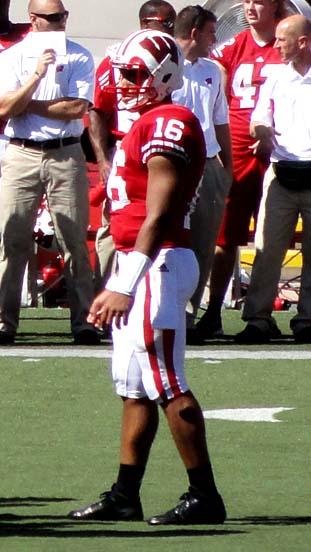Free agency, with no salary cap, no limitations. That's what college football and basketball has become over the past couple of years thanks to the graduate student transfer rule.
 When a student-athlete transfers from one university to another, that student-athlete must spend one year in residency at the new institution before participating in athletics at the new school. This costs the athlete one year of his eligibility, thus ensuring that he (or she...don't mean to be gender specific as this issue is going to affect both men's and women's athletics) does not change schools just go join a "better" program. If you decide to change schools, whether due to playing time or you just don't like the coaches anymore, you have to pay with a year of eligibility.
When a student-athlete transfers from one university to another, that student-athlete must spend one year in residency at the new institution before participating in athletics at the new school. This costs the athlete one year of his eligibility, thus ensuring that he (or she...don't mean to be gender specific as this issue is going to affect both men's and women's athletics) does not change schools just go join a "better" program. If you decide to change schools, whether due to playing time or you just don't like the coaches anymore, you have to pay with a year of eligibility.There are certain exceptions to this rule, many on a case-by-case basis. For example, if an athletic program is cancelled at a school, athletes of that sport are allowed to transfer without having to sit out a year. Some more specific cases allow students in difficult situations to leave without being penalized. After the Carlton Dotson incident in 2003, where the Baylor forward was charged with murdering his teammate, other members of the team were granted immediate transfer requests.
These exceptions to the transfer rule are appropriate. A student should not be penalized for something that is out of his control.
However, there are other ways that student-athletes can transfer without losing a year of eligibility that undermines the system.
If a student-athlete graduates with an undergraduate degree from his school and still has a year or more of eligibility left, he may transfer to another school to enroll in a graduate program there. If he enrolls in a graduate program that his original institution did not offer, then he does not have to sit out during the one year residency period.
 Wisconsin QB Russell Wilson is the poster-child for this newest form of transfer. After four years on the roster for NC State, the Wolfpack released him of his scholarship after the 2010 season. He still had one year of eligibility remaining (he redshirted during the 2007 season). Wilson graduated in the spring, enrolled in a graduate program at Wisconsin, and joined the football team for the 2011 season. He led the Badgers football program this season to the inaugural B1G Championship and a trip to Pasadena.
Wisconsin QB Russell Wilson is the poster-child for this newest form of transfer. After four years on the roster for NC State, the Wolfpack released him of his scholarship after the 2010 season. He still had one year of eligibility remaining (he redshirted during the 2007 season). Wilson graduated in the spring, enrolled in a graduate program at Wisconsin, and joined the football team for the 2011 season. He led the Badgers football program this season to the inaugural B1G Championship and a trip to Pasadena.Here's the rub with this transfer. ANY school can offer a graduate program that a student-athlete's former school did not have. ANY big FBS / Division 1 program especially is going to have enough graduate degree options for a student to enroll in. This means any program, especially a big name big school program, can pick up a player for a year through this method, which essentially is just a form of free agency.
Wilson isn't the only benefactor of the transfer rule. RB Zach Brown transferred from Wisconsin to Pitt for his last year of eligibility. Greg Paulus transferred from Duke to Syracuse to play a year of football for the Orange after years of shooting the rock under Coach K. Next year QB Dane Crist will rejoin forces with Charlie Weis when he transfers from Notre Dame to Kansas. This year, Valparaiso star guard Brandon Wood graduated and transferred to Michigan State. His presence with Tom Izzo has helped the Spartans go from unranked in the preseason to a top 10 team with less than a month before Selection Sunday.
Put it this way...if this transfer had been more popular a few years ago, it is very likely that somebody like Stephen Curry would not have lasted all four years at a mid major school like Davidson. Instead, he would have transferred for one year to a school like Duke (like his brother Seth did...although Seth was just a regular transfer having to sit out a year) and played with the Blue Devils, probably all the way to a Final Four appearance.
Give it two more years and you'll see the same big name programs each year in the Final Four. The mid major team may very well be dead. The great stories of Butler and VCU will no longer be heard of. Combined with the pathetic "one and done" rule (a future article for What's Wrong With Sports you can rest assured), the graduate transfer rule is quickly destroying college athletics. Enjoy this picture to the right, because you will likely never see it again.






No comments:
Post a Comment
We love to hear your feedback! This site is created by the fans and for the fans. But please, keep it clean. Any lewd, obscene, or irrelevant comments will be removed immediately.